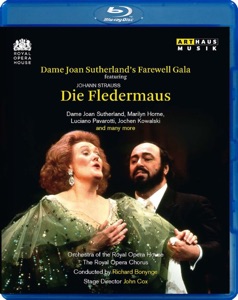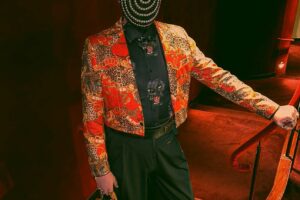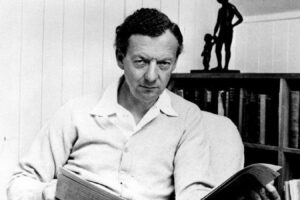
Gather around while I play Ghost of New Year’s Eve past—December 31, 1990 to be exact—the gala farewell
of Dame Joan Sutherland to the Royal Opera Covent Garden stage.
This classic performance is one of a number Arthaus Musik has seen fit to restore and rerelease, including the famous Robert Carsen Mefistofele with Samuel Ramey from San Francisco Opera, Eva Marton’s first Turandot from Vienna with José Carreras, and the Luca Ronconi Aida from La Scala with Luciano Pavarotti, Maria Chiara, and Ghena Dimitrova as Amneris. It’s great to have them all back with picture upscaled to 1080i in High Definition for Blu-ray even if they do show their age and sound is still just PCM Stereo since they’re all pre-surround.
This revival of the Royal Opera’s 1977 production of Johann Strauss’ II Die Fledermaus was intended as Dame Joan’s farewell from the first but the original plan was that she play Rosalinde. In her highly detailed autobiography (which also serves as an astonishingly potent cure for insomnia) she talks about how, ever pragmatic to the last, she decided the production had too many stairs for her to negotiate and she simply didn’t feel able to do the role justice any longer. (Never mind that she’d just sung two productions of Norma that same year, not to mention Les Huguenots.)
So a gala musicale was inserted for her into the Act II party scene on the New Year’s Eve performance featuring herself and her two most prestigious colleagues, Marilyn Horne and Luciano Pavarotti.
I have to confess here that, although I love me some Offenbach, I’m completely immune to the magic of Viennese operetta. Still I’ve sat through innumerable live performances, telecasts, and recordings of The Merry Widow and Fledermaus waiting for the lightning to finally strike. Most especially with Fledermaus since so much of the score is really gay and lovely. Yet I find the conceit of the philandering husband troubling and it just makes me imagine the scene that Strauss didn’t set to music where Rosalinde discovers she has herpes simplex 2.
An able, if not completely gala cast, was engaged for the occasion. The pert-at-any-age Judith Howarth is the seen-it-all-before chambermaid Adele and he vocalism improves immeasurably as the evening progresses till she’s downright glorious in her last bits. Nancy Gustafson as her lady Rosalinde sings very well even if she omits the tricky middle measures in the Czardas but then which soprano doesn’t? She just lacks that last soupcon of scintillement that would make her delicious instead of merely charming.
Louis Otey’s matinee idol good looks and height certainly make him believable as the rounder Eisenstein which is a refreshing change. He’s got a lovely baritone and doesn’t seem to have any trouble with the tessitura. He’s got a certain oily charm as well and he’s more than game when they make him part of the festive, if uncomfortably cramped, ballet in Act II.
Anthony Michaels-Moore as Dr. Falke and Eric Garrett as Colonel Frank hit their marks and know where to land the jokes. John Sessions does ten minutes of standup at the top of Act III as Frosch the Jailer and very, very, funny he is too.
I’m not sure whose brainstorm it was to employ the countertenor Jochen Kowalski as Prince Orlofsky. Yes, remember him? Although the tessitura and gender may fit the role his performance style is oddly aggressive and hardly that of a bon vivant on the edge of ennui. Points for him though for actually being intelligible in English.
The production by Julia Trevelyan Oman is opulent in a sepia-tinged trompe-l’oeil style with Vienna appearing a tad worn around the edges. Costumes are appropriate but uninspired. The enormous party gown for Rosalinde in red and black looks like Carmen wandered into the Ziegfeld Follies. The ladies and gentlemen of the chorus sing with verve and excellent diction even if they all look as if they should be in bed at their age.
John Mortimer’s translation extends to the lyrics as well so, for once, we don’t get that ridiculous hybrid performance where an English-speaking cast suddenly lapsing into German to exhibit their stronger emotions. It’s obvious he takes pleasure in the various legal filigree of the plot and he does bother to rhyme now and then which shows an honest effort with a stylish turn of phrase.
RIchard Bonynge, oh you knew he was lurking about here somewhere, makes an absolutely meringue out of the overture. He whips the froth into peaks so well and he’s positively in love with his little surprise Viennese downbeats (although he does let his musicians and singers in on the joke). The orchestra really outdoes itself for him and they positively revel in Strauss’ dash and melodic sparkle I confess to having hummed nothing else since having viewed this DVD. Perhaps I’m not so immune after all?
Right before the end of the party scene Dame Joan takes the stage in the most enormous gown of dark lime-green net you’ve ever seen, spangled with sequins and stars. Her charges, Jackie and Luciano, toddle up behind her and the real fun starts.
Mr. Pavarotti gifts us with the tenor aria from Cilea’s L’Arlesiana and I’d forgotten how utterly magnificent he was when he was on top of his game. At 55 years old he brings the audience to absolute rapture with his ardent phrasing and crisp diction. Ms. Horne and Ms. Sutherland respond with the Act I duet from Rossini’s Semiramide. The Met had finally gotten around to mounting the Rossini for Horne that year but who knows the last time they had both sung this music together let alone the whole opera?
It’s tragic really that we don’t have more documents of them together live. Sutherland at 63 is still astonishing fleet in the passage work and Horne was definitely enjoying the Indian summer of her career. She sticks around and gives us her Dalila party piece, “Mon coeur” with that endless legato. Then we have a lovely “Parigi o cara” from Traviata with Luciano gingerly trying to embrace the diva without stepping on her voluminous skirts. Then our diva is left alone with the touching “Home, sweet home.”
At the end of the performance there’s a proper send off with a speech by General Manager Jeremy Isaacs, hundreds of streamers blanketing everything and that peculiar British custom of indoor pyrotechnics. After so many thousands of floral tributes had been laid at this Adme Joan’s feet and she still manages a facade of believable humility?
They present her with the drum she played as Marie in La Fille du Regiment and she not only seems thrilled but remembers how to properly play a snare drum with one hand and two sticks. Pretty nifty.
For those left wanting more, the disc offer the Trovatore “D’amor,” the Mad Scene from Lucia and “Casta diva” from Norma, all from Australian telecasts in the late 1980’s, I believe. For those die hard fans of La Stupenda out there this is a lovely souvenir of her great art and it will bring much pleasure.



























Comments